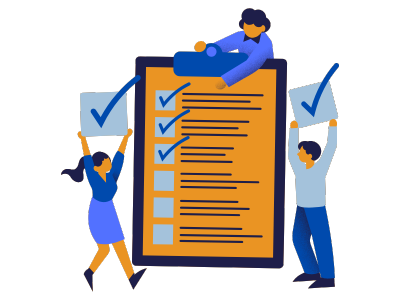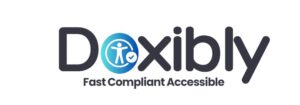PDF Accessibility
Solutions
Overview
A complete software suite with expert PDF remediation services to help you achieve and maintain PDF accessibility and compliance with standards like ADA, WCAG, and PDF/UA.
Identify. Correct. Stay Ahead.
Minimize legal risk, lower remediation costs, and meet compliance deadlines with our PDF accessibility software and services—powered by our proven three-step compliance process

Identify.
We help you locate inaccessible PDFs using industry-standard tools and expert assessment—pinpointing compliance gaps based on ADA, WCAG, and PDF/UA guidelines.

Correct.
Our team of skilled PDF remediation specialists manually fixes accessibility issues with precision—delivering compliant, user-friendly documents within five business days.

Stay Ahead.
Doxibly partners with you to ensure ongoing compliance by providing guidance and support—so every new document you produce meets accessibility standards from the start.
High-Volume PDF Accessibility Solutions.
Efficient, Scalable PDF Accessibility Services for Large Document Sets
Doxibly specializes in high-volume PDF remediation—delivering fast, accurate, and fully compliant documents at scale. Whether you have hundreds or thousands of PDFs, our team ensures they meet ADA, WCAG 2.2, PDF/UA, and Section 508 standards with quick turnaround times and guaranteed quality.

Fast, Compliant PDF Accessibility with Doxibly.
Remediate your PDFs in-house with expert guidance or let our specialists do the work for you. Partner with our team today to accelerate your path to digital document accessibility and full compliance with ADA, WCAG, and PDF/UA standards.
Frequently Asked Questions
Multiple laws require that PDFs and other digital content be accessible to people with disabilities. The specific regulations that apply to your organization depend on several factors, including whether you’re a public or private entity, your geographic location, and where your users or customers reside.
In the U.S., for instance, Section 508 of the Rehabilitation Act mandates PDF accessibility for federal agencies and their contractors. Other applicable laws include the Americans with Disabilities Act (ADA), the European Accessibility Act (EAA), Canada’s AODA, and more.
Want to understand which PDF accessibility requirements apply to your organization? Connect with our team today to ensure you’re on the right path to compliance.
Creating and maintaining accessible PDFs requires a structured, organization-wide approach. Implementing consistent processes for creating, managing, updating, and publishing accessible content is essential for long-term compliance and inclusion.
Recommended Best Practices:
Establish a PDF Accessibility Policy: Define your organization’s standards for PDF accessibility (e.g., WCAG, PDF/UA) and integrate them into your content creation and publishing workflows.
Conduct Regular Accessibility Scans: Continuously monitor PDFs across your website, intranet, and digital portals to identify accessibility gaps and stay compliant.
Prioritize High-Impact Remediation: Focus first on remediating documents most frequently accessed by users or those with legal exposure.
Equip Your Team: Ensure employees have access to training, tools, and support services to create accessible PDFs from the start.
Engage Expert Support: For large volumes of inaccessible PDFs, work with trusted third-party remediation specialists who offer a 100% compliance guarantee.
Treat Accessibility as Ongoing: Accessibility is not a one-time task. Laws and standards continue to evolve—so should your practices.
Creating or converting content to HTML can significantly enhance accessibility. However, many documents require offline availability, printing, or the ability to collect signatures—making HTML conversion impractical or impossible in those cases.
Additionally, most organizations lack the internal resources or bandwidth to convert every document to HTML, especially when dealing with large volumes of existing content.
